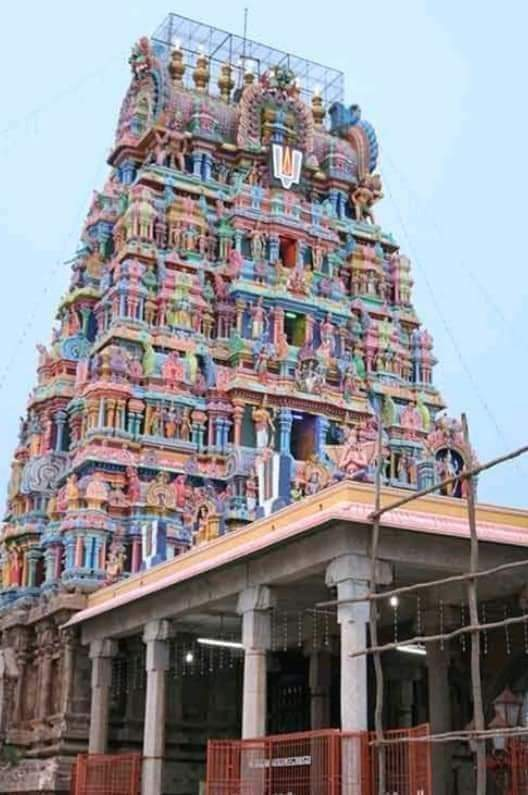#Bhadrakali_Temple is situated atop a hill between the cities of Hanamkonda and Warangal in Andhra Pradesh. The presiding deity of the temple is goddess Kali in her fierce form, large eyes, grim countenance, and eight arms wielding different weapons. The image is made of stone 

and it sits on her vehicle, the lion. Legend has it that the Kohinoor diamond was the left eye of the goddess in this temple. In 625 AD, King Pulakesi II of Chalukya dynasty had built the Bhadrakali Temple. When the region came under the reign of Kakatiya rulers, they made 

Bhadrakali as their tutelary deity, and fixed the left eye of the goddess with the rare #Kohinoor_diamond. Later, sometime in 1310 AD, the Delhi sultanate under Alauddin Khilji brought the empire of Kakatiyas under their regime, destroyed the Bhadrakali temple and took away the 

prized Koh-i-Noor to Delhi as their loot. Then onwards, the awe-inspiring diamond went from one hand to anothern from Babur and Humayun to Sher Shah Suri to Shah Jahan, Aurangzeb and Maharaja Ranjīt Singh of Patiala. When Maharaja Ranjit Singh was nearing his death, he willed 

that the ownership of the coveted diamond be given to the deity at Jagannath Temple. He died in 1829, leaving his kingdom with his minor son and heir Duleep Singh (just 10years old) and his wife. The cunning British company officials who had already eyed on the rich kingdom,
violently forced the queen Regent Rani Jind Kaur and her son in 1849 to sign over the kingdom along with Koh-i-noor and a red-colored Timur Spinal (353.5 ct largest stone in the world). Mined in the kollur diamond mines near Guntur, AP, it is the size of a hen's egg. Original
weight: 793 ct; later cut to 105 ct. However, the British officials ignored the will of the king, and instead, took it to England as a gift totheir queen. Going by the journey covered by Koh-i-Noor diamond since 1306, it can be said that whichever king had it in its possession, 

met an early death. In fact, it is written that the stone is a harbinger of misfortune for male wearers–only God or a woman can wear it withoutharm. After goddess Bhadrakali, only the British Queen Elizabeth II could possess it without incurring serious harm, though it should be 

noted that the British empire faced decline a few years after the diamond went into its custody. To avoid any untoward happening, and knowing well the curse carried by the diamond, the queen avoided wearing the crown studded with Koh-i-Noor diamond. As for the Bhadrakali Temple 

we see today, after facing much plundering and damage in the last centuries, the temple was restored in the 1950s by an ardent devotee and some philanthropic affluent merchants. Also known as the Golden Temple of south India, the Chalukya style architecture of the temple is worth 

admiring. The temple wears a golden hue at sunrise and sunset, hence, it has earned the sobriquet “the Golden Temple of South India.” Next to the temple is the Bhadrakali Lake which is worshipped by the pilgrims, but, in order to maintain its sanctity, no one is allowed to take a
dip or step into its waters. The temple can be reached via TSRTC or auto-rickshaw services from Warangal railway station or Kazipet railway station. Flights are available to the Warangal Airport from different cities in India. There are train services also connecting Warangal to
*Sorry wrong airport. Rajiv Gandhi International Airport at Hyderabad. Not Warangal airport.
• • •
Missing some Tweet in this thread? You can try to
force a refresh





















